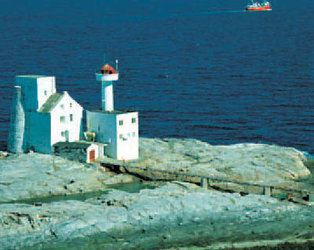EGNOS TRAN – Maritime
Introduction
Due to the low elevation of the EGNOS satellites, their signal is difficult or sometimes impossible to receive in certain regions. Many present and also future applications require a high accuracy and also a high reliability of the position determination, which can easily be performed by EGNOS. If the EGNOS signal cannot be received, the requirements of those applications can no longer be satisfied.
To lessen the problem the EGNOS TRAN - Maritime project team evaluated various technical methods to broadcast the EGNOS signal via terrestrial networks, like GSM/GPRS, Loran-C or Ground Regional Augmentation System (GRAS).
Objectives
The EGNOS TRAN - Maritime project aims to integrate EGNOS with a VHF link called Automatic Identification System (AIS) used by the maritime users for communications between vessels and communication with the shore. This system, set-up in the Fjords of Trondheim (Norway) has proved to be a good complement to EGNOS in areas of non visibility or poor reception of the EGNOS signal-in-space. In addition, the system has proved to be a cost-effective alternative solution to the current positioning DGPS /IALA system.
Applications
The main application of this project is for Maritime Navigation and Reporting.
Technical Information

The technique allows data from the European Geostationary Navigation Overlay Service (EGNOS) to be received under practically all conditions and in particular on board ships. The system allows police, customs, military, search and rescue centres as well as coastal and harbour authorities to monitor traffic in their territorial waters.
With the backing of ESA, Norway's Kongsberg-Seatex has developed a novel technique where the EGNOS signal is retransmitted to maritime users by use of the Automatic Identification System (AIS) - soon to be mandatory for most vessels. The system was demonstrated in Trondheim (Norway) in 2003, used with a vessel leaving harbour. The system aims to overcome the reduced availability of signals in some areas due to physical obstructions or high latitudes.
Gaps in coverage are overcome using the EGNOS Terrestrial Regional Augmentation Networks (EGNOS TRAN) technique. Several applications exist including civil aviation, road and maritime transportation.
The infrastructure will be of benefit as it provides automatic vessel identification. Geographical coverage and positioning accuracy is better compared to radar. Collisions and environmental catastrophes can be more easily avoided with improved coordination and guidance of ship traffic. Additionally, messages on weather and water conditions, safety information and sailing plans can all be transferred electronically.
Schedule
The contract for EGNOS TRAN – Maritime was signed in October 2001. The design was completed by June 2002, and the demonstration campaign was carried out by September 2003. The project was completed in December 2003.
Consortium
EGNOS Tran – Maritime has been developed by the European Space Agency in partnership with the Norwegian company Seatex-Kornsberg.
Contact points
Stig Erik Christiansen at Seatex-Kornsberg: stig.erik.christiansen@kongsberg-seatex.no
Juan Carlos de Mateo at ESA-ESTEC: Juan.de.Mateo@esa.int




